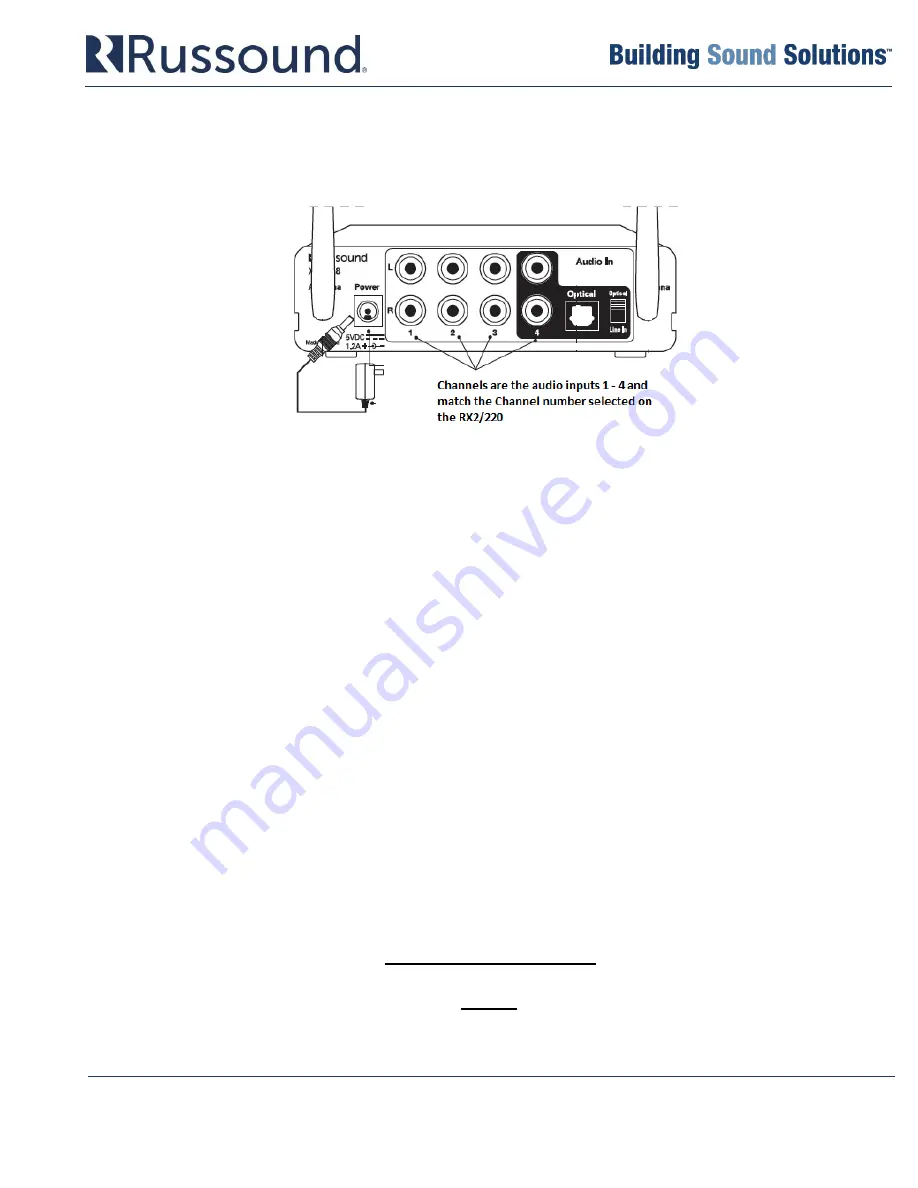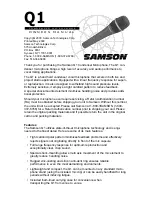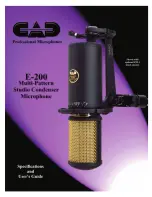
©2015 Russound/FMP, Inc. Russound and the Russound logo are registered trademarks of Russound/FMP, Inc. All other
trademarks are the property of their respective owners. 1 Forbes Road, Newmarket, NH 03857 USA • Tel (603) 659-5170 •
http://www.russound.com | Technical Support: 8:30 AM ET to 7:00 PM ET 866.888.7466 (toll free in the USA)
Set the
Channel
number on the RX2 receivers. Channel numbers match the source
inputs on the rear panel of the TX8 (1-4). Source input 1 is Channel 1 on the receiver,
source input 2 is Channel 2, etc.
Adjust volume on your mixer, controller or zone 2 output as needed.
Verify the LEDs on the front of the TX8. The Power LED should be a solid green and the
Link LED should will show a green LED when other X1 receivers are detected on the
same ID.
Verify the LEDs on the front of the RX2 or RX220. The Power LED should be a solid green
and the Link LED will show a green LED when it detects an audio signal and connects to a
TX8.
Setup notes:
Link LED: Solid indicates both connection to a TX8 AND audio signal is present. A
blinking Link LED indicates there is no TX8 detected on this ID. Check ID on TX8 and
RX2/RX220 to match ID number.
Auto-off function: The Link LED on the RX2/RX220 will shut off if no audio signal is
present from the TX8 after 10 minutes and will indicate a link once a signal is present
again.
ID Settings
The X1 products operate over three frequency bands, 2.4GHz, 5.2GHz and 5.8GHz and feature
Frequency Hopping Mode or Fixed Frequency Mode. These available options allow you to find
the ID setting that works best for your particular installation.
Fixed Frequency Mode operates on a set frequency band.
Frequency Hopping Mode will automatically search for the best and least congested
frequency within the ID setting selected.
ID 1-3 uses 2.4GHz bands that operate better through walls and are often used for Wi-Fi
networks.
ID 4 uses the 4.18GHz band that offers a balance between least possible interference
and better performance over higher ID bands.






















